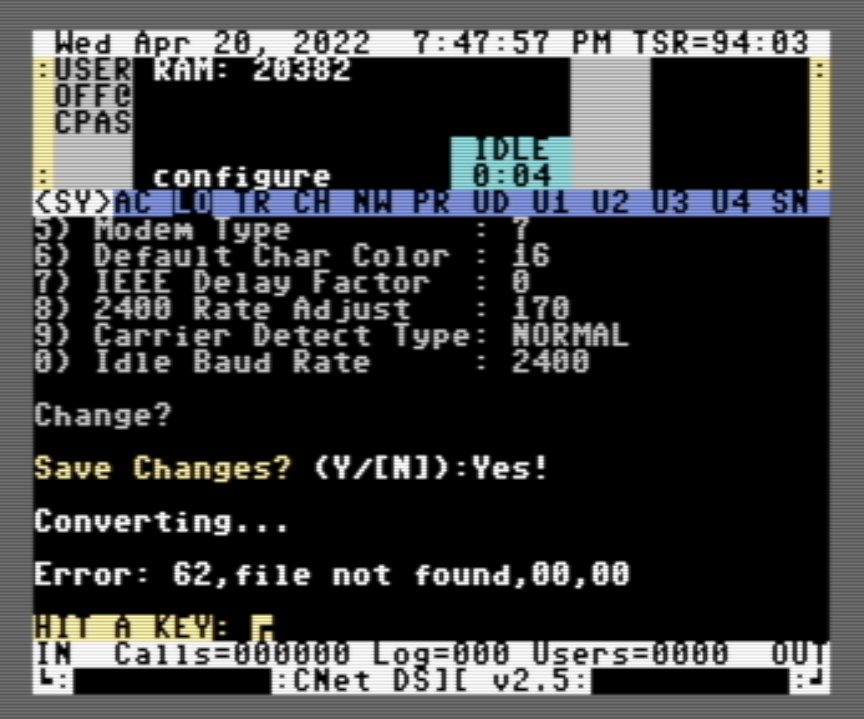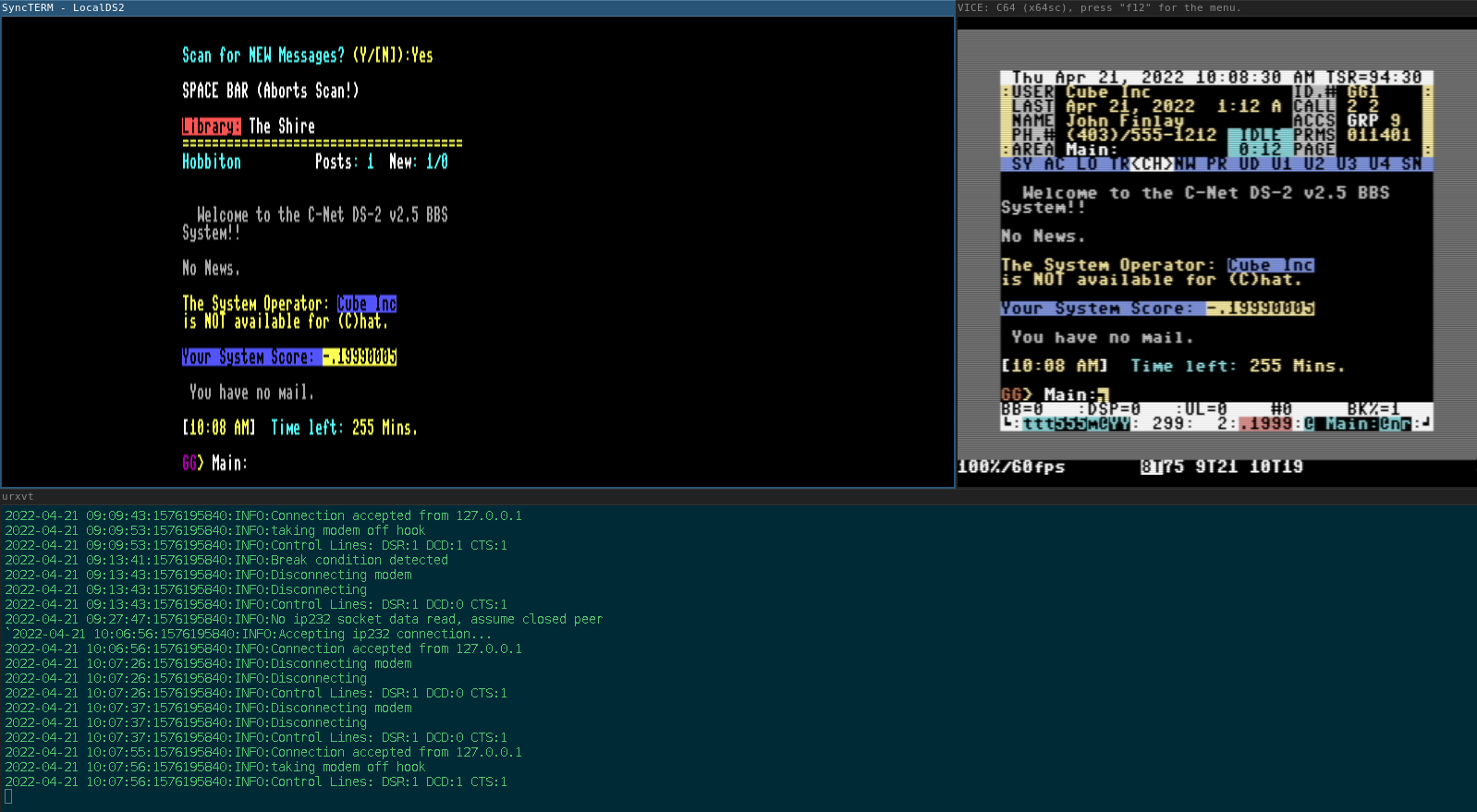C-Net 64 DS2
Posted: Wed Apr 20, 2022 9:55 pm
Since this technically does not have anything to do with Image BBS, I wasn't sure if I should post it in the Image BBS forum or not and opted not.
I've got my CMD hard drive set up, but I am having some strange behavior from DS2. This is stock, and I copied both disks into the same partition of the CMD. However, no matter what I have tried, when I try to set/change default parameters (Option 3 from the configure menu) I can make the changes, but it throws a File Not Found error when I try to save the changes. I don't know what file it is trying to modify here, but whatever it is - I don't have it. It also seems like whatever it is looking for, which is not there, also makes the board enter the configure program every time I boot, even though Users, access levels, subs, UDs, etc. are all configured.

Also, when I try to enter local mode, it just immediately kicks me back to the Waiting for Call screen, as though I just logged off. It did the same when I had the two original disk images in 8 and 9, but *one* time I managed to get to the Local Mode menu - I just don't remember what I did. I can call into the board from another C64 or SyncTerm, and once there I can take over the call from the C64 running DS2 or I can do everything from the remote computer - it seems to work just fine, I just cannot enter Local Mode from the BBS Waiting for Call screen.
I suspect, again, that it is looking for a file of some sort that is missing based on the fact that it goes for disk access the moment I hit F7 when hovering over the LO tab(?). It seems like it can't find something and then it goes and resets back to waiting for call.
Can anyone more familiar with DS2 point me in the right direction? I checked that I do have dsp.Local Mode on the dsp disk (everything is in 8,0).
Cube Inc
I've got my CMD hard drive set up, but I am having some strange behavior from DS2. This is stock, and I copied both disks into the same partition of the CMD. However, no matter what I have tried, when I try to set/change default parameters (Option 3 from the configure menu) I can make the changes, but it throws a File Not Found error when I try to save the changes. I don't know what file it is trying to modify here, but whatever it is - I don't have it. It also seems like whatever it is looking for, which is not there, also makes the board enter the configure program every time I boot, even though Users, access levels, subs, UDs, etc. are all configured.

Also, when I try to enter local mode, it just immediately kicks me back to the Waiting for Call screen, as though I just logged off. It did the same when I had the two original disk images in 8 and 9, but *one* time I managed to get to the Local Mode menu - I just don't remember what I did. I can call into the board from another C64 or SyncTerm, and once there I can take over the call from the C64 running DS2 or I can do everything from the remote computer - it seems to work just fine, I just cannot enter Local Mode from the BBS Waiting for Call screen.
I suspect, again, that it is looking for a file of some sort that is missing based on the fact that it goes for disk access the moment I hit F7 when hovering over the LO tab(?). It seems like it can't find something and then it goes and resets back to waiting for call.
Can anyone more familiar with DS2 point me in the right direction? I checked that I do have dsp.Local Mode on the dsp disk (everything is in 8,0).
Cube Inc


